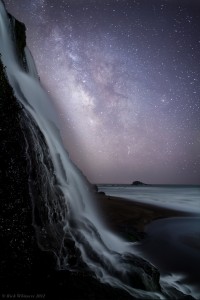Rick Whitacre spent eleven hours composing and capturing this image. All of that planning and waiting produced stunning results, but funnily enough, when the photograph popped up on my twitter feed, it reminded me that taking the opposite approach—no planning—also has its benefits. A few weeks ago, I was in California, spending time with my wife’s family in a lovely rental home at the top of a hill overlooking Monterey Bay. Twice I wrapped myself in blankets and sat out on the (cold) metal deck furniture to watch the stars. I can’t remember the last time I sat outside without some sort of agenda to guide me. I go outside to do the #ISSWave, to watch meteor showers, to (infrequently) use one of our telescopes to look at pre-selected targets… I plan a lot, too much.
Sitting outside a few weeks ago, enjoying the best view of the Milky Way I’d had since the last time I was in Monterey, I followed no plan. I didn’t have a star chart (well, my iPhone, but its light messed up my night vision, so I kept in my pocket) or a schedule. Just me, my blankets, and the wind. That’s how I used to observe when I was a kid, staring up at the sky every night without much of a goal other than to eventually fall asleep. I seem to have lost the ability to just watch the stars, I’m too busy trying to fit them into the game plan for my career, or my need for self-improvement, or whatever. Mr. Whitacre’s photograph, for all the work behind it, reminded me that occasionally I should just look at the sky, not study it.
